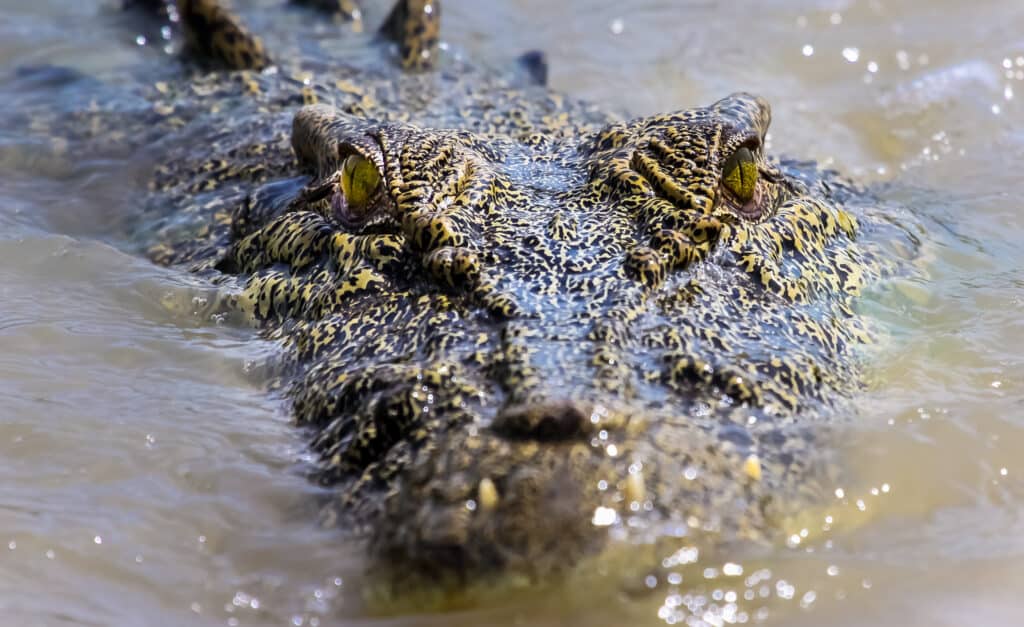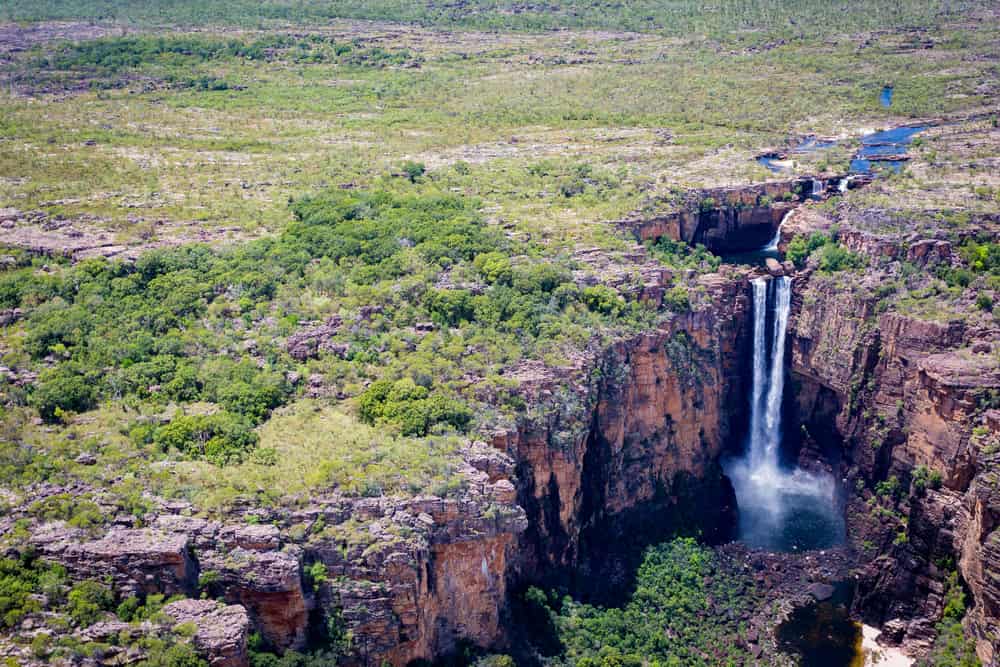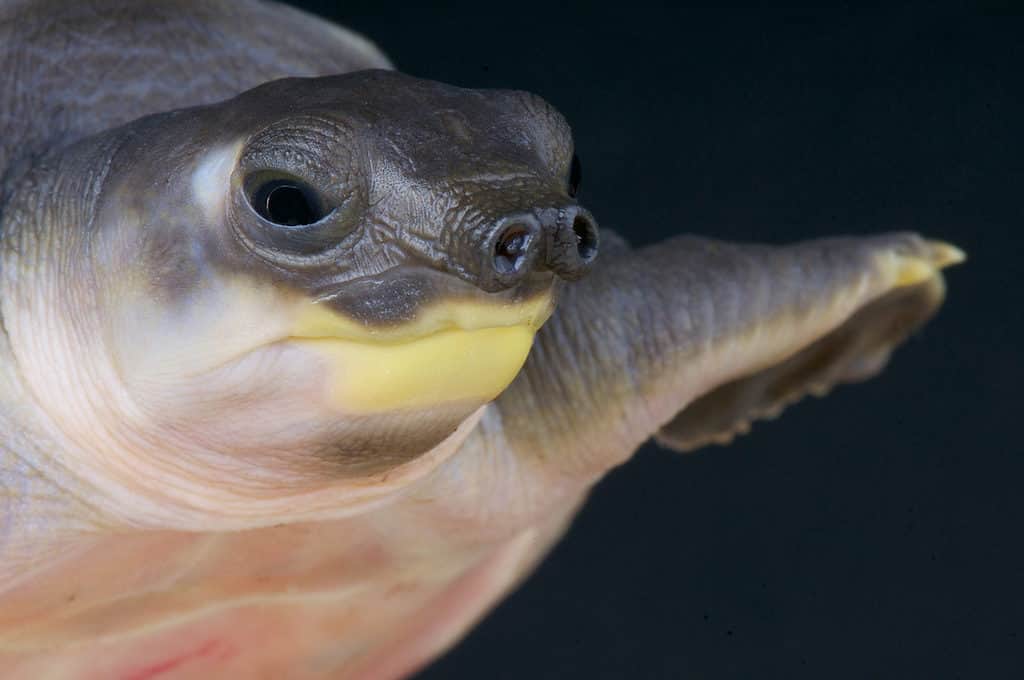Many species of crocodiles, like the American crocodile, are shy and reclusive, avoiding contact with humans at all costs. Not so the saltwater crocodile. These formidable beasts are likely to attack anything (or anyone) that gets too close, including people.
Australia’s infamous Cahills Crossing is a shallow river crossway infested with saltwater crocodiles. Yet, that doesn’t stop some from attempting to travel across the most dangerous crossing in the world.
Where is Cahills Crossing on a Map?
Cahills Crossing is a narrow, concrete bridge over the East Alligator River. It’s located in Australia’s Northern Territory, within the Kakadu National Park.
Built in the 1960s, Cahills Crossing connects the Kakadu National Park with Arnhem Land. Arnhem Land is a vast reserve of Aboriginal-owned land home to a diverse landscape of floodplains, rivers, savannah woodlands, and even rainforests.

Filled with croc-infested waters, Cahills Crossing is the world’s most dangerous crossing.
©Dietmar Rabich / CC BY-SA 4.0 – License
What Makes Cahills Crossing So Dangerous?
The bridge can only be crossed during low tide, and it’s typically closed during Australia’s wet season (from December to May), as water levels remain too high for safely traveling across by vehicle. When water levels are dangerously high, cars that attempt to cross risk getting washed into the croc-infested waters.
But high water levels are the least of the dangers along Cahills Crossing. In normal conditions, you can find five to nine crocodiles per kilometer (.6 miles) along the river. From July to November, crocodile density increases dramatically.
In the dry season, large tides push muddy water and mullet upstream across the causeway. Crocodiles congregate on the crossing to feast on the swarms of fish. During this time, up to 50 crocodiles have been counted along a quarter-mile stretch of river. Even during the wet season, 4 or 5 crocodiles are usually spotted at a time along the crossing.
About Saltwater Crocodiles
Estuarine (saltwater) crocodiles (Crocodylus porosus) are the largest reptiles in the world today. Larger even than komodo dragons, they grow to around 17 feet in length and can weigh a whopping 1,000 pounds. However, they can get bigger than that, with the largest recorded up to 23 feet long and over 2,200 pounds.

Saltwater crocodile in the Kakadu National Park Northern Territory, Australia.
©Bildagentur Zoonar GmbH/Shutterstock.com
It’s not just their size that makes these prehistoric beasts so formidable. Saltwater crocodiles are excessively aggressive, can hold their breaths for long periods underwater (as they stalk their prey above land), and have a powerful bite.
Has Anyone Ever Died Attempting to Cross the Bridge?
Four-wheel drive cars and large trucks outfitted with special equipment that allows them to drive through water can safely cross the causeway. Travelers need to watch the tides and obtain a special permit to enter the Indigenous Arnhem Land.
However, not everyone follows the safety rules at Cahills Crossing. Despite the many signs warning people to stay in their cars, people have been photographed standing near the water’s edge. Two people have lost their lives to crocodiles at the crossing: one in 1987 and the other in 2017.

Cahills Crossing was considered safe for fishing before a fatal crocodile attack occurred in 1987.
©kenhodge13 / CC BY 2.0 – License
The Cahills Crossing Viewing Area
You will need a four-wheel drive vehicle outfitted with special equipment for crossing the water to traverse the crossing. You must remain in your vehicle at all times. Do not attempt to cross the bridge on foot.
However, you don’t need to be up close and personal to view the crocodiles. There is a secure vantage point where tourists can safely view the Cahills Crossing on the western bank of the river. Visitors can watch the spectacle of hungry crocs feeding on fish and basking in the sun from three viewing platforms directly overlooking the crossing.
What Other Wildlife Lives in the Area?
The Kakadu National Park is one of the most beautiful national parks in Australia. Aside from saltwater crocodiles, Kakadu is also home to a diverse number of animals. Some animals living in the area are rare and protected, and not seen in any other parts of the world.

The Kakadu National Park is one of the most beautiful national parks in Australia.
©iacomino FRiMAGES/Shutterstock.com
For example, northern quolls, once widespread across northern Australia, now only reside in small populations in several areas of Kakadu.
Additionally, other endangered species include the river shark and the spear tooth shark. These two species are found only in a few spots in Australia and Papua New Guinea. It’s estimated there are only around 250 each of these rare shark species remaining in Australia.
Other animals living near the Cahills Crossing include:

The pig-nosed turtle is the only freshwater turtle with flippers.
©iStock.com/reptiles4all
- Agile wallaby
- Pig-nosed turtle
- Leichhardt’s grasshopper
- Wallaroo
- Nabarlek (pygmy rock-wallaby or little rock-wallaby)
- Termites
- Flatback sea turtle
- Flying fox
The Kakadu is home to many bird species as well, including:

The jabirus (
Jabiru mycteria) is a large black-necked stork measuring 47 to 55 inches long and weighing 9.5 to 19.8 pounds, with a 7.5 to 9.2-foot wingspan.
©Rini Kools/Shutterstock.com
- Waterbirds (such as egrets, magpie geese, white-bellied sea eagles, and jabirus)
- Partridge pigeons
- Blue-winged kookaburras
- Chestnut-quilled rock-pigeons
- White-throated grasswren
- Red-tailed black cockatoos
The photo featured at the top of this post is © Danny Ye/Shutterstock.com
Thank you for reading! Have some feedback for us? Contact the AZ Animals editorial team.







